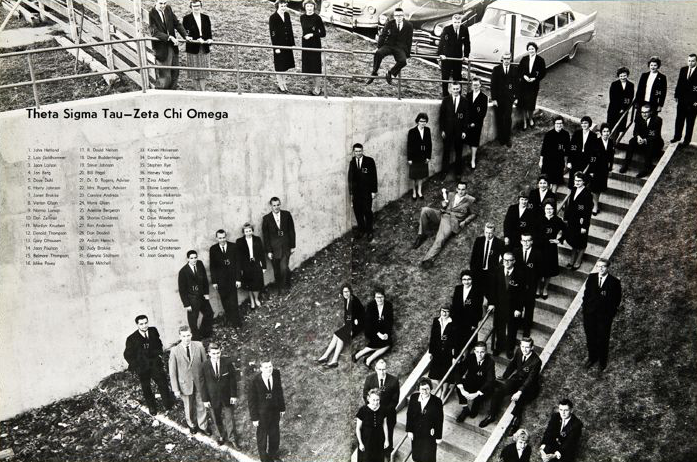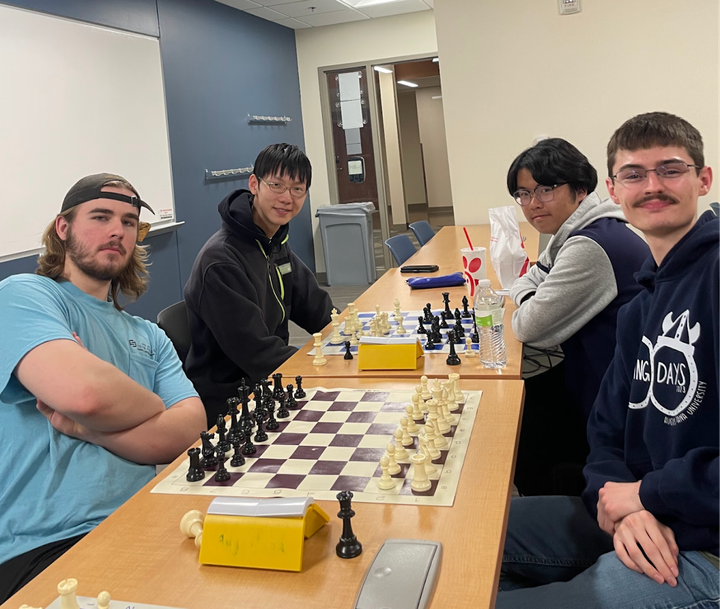“Pandemic: The Art of Survival” reflects artists’ adaptations to the challenges of 2020
The Center for Western Studies (CWS) gallery exhibit, “Pandemic: The Art of Survival,” commemorates a year-long artistic journey of the pandemic with artwork by 37 artists.
“We needed to honor a year that was really awful for artists, and we needed to take a look at what they were doing […] during this time of self-isolation, sadness,” Kristi Thomas, CWS education assistant and curator of the exhibit, said.
The mixed mediums and subject matter of the exhibition display how diverse the experiences of artists were during the pandemic. Some artists went into nature for inspiration, depicting landscapes, flowers and animals. Others contemplated empty cityscapes. Yet more artwork considers the pandemic directly.
Thomas said a variety of moods accompany the exhibit. One wall is sad, another beautiful, another exciting, which reflects the mixed emotions of living through a tragic time while still growing to find little joys throughout.
In 2020, the CWS shut down for three months, so when it reopened, Thomas said she wanted to do everything she could for regional artists.
“We have this wonderful little artist community,” Thomas said. “It’s almost like a family.”
Many artists have struggled with canceled shows, virtual or limited events and other COVID-19 restrictions.
“We started doing exhibits with as many artists as we could because we knew how hard the pandemic had hit the artist community,” Thomas said.
To help as many artists as possible, the pandemic gallery was opened up to any subject matter made between March 2020 and now. Thomas said acceptances were limited to one per artist so as many artists as possible could be exhibited. This broad span and tight numeric limit are unusual for the gallery.
The result is an eclectic mix of styles well-suited to the pandemic that “zig-zag from one emotion to the next,” according to Thomas.
Jessie Rasche, who painted “Careful Grace” displayed in the gallery, said her piece focused on capturing the story of essential workers in the pandemic in South Dakota. The artwork depicts a grocery store employee in a mask on the left and a line of unmasked customers on the right.

Rasche said this oil painting stemmed from her moments of coming to grips with that story of some people wearing masks, others not, some people being forced to be in public all day for their essential jobs, others not.
“It’s this thing that affects everybody’s lives in the whole world, and yet, all of us are experiencing it very differently,” Rasche said.
She started with photographs she took at a local grocery store, narrowed the images down to one that told a story, and set to illustrate the scene with her oil paints in her home studio. “Careful Grace” is the first pandemic-centered artwork of Rasche’s to be displayed in a gallery.
Considering the different experiences of South Dakotans was a common theme for other gallery artists as well.
Rodger Ellingson’s watercolor cityscape, “Perspective Matters,” depicts downtown Sioux Falls in sections of bright color, gray and blank white.

“The whole thing is South Dakota’s reaction to the whole pandemic,” Ellingson said.
The color sections represent people whose lives go on pretty much as normal, the grayscale swaths bring in people whose lives have drastically changed with cautionary practices and the blank sections represent those who’ve passed from COVID-19.
Other elements of the gallery report COVID-19 times from a more personal perspective.
Art professor Lindsay Twa has a graphite self-portrait displayed in the collection. In the drawing, she wears a mask and an intense look.

Twa said the piece was part of the Summer Sketchbook Challenge that she started for students, alumni and the art community to stay connected as everyone dispersed last March. The idea was to put pencil to paper every day to stay in practice with art.
She said this sketch felt like a “rite of passage” in a collection of artwork set in a pandemic, and even a year later, it still fits with the global conversation and the mood.
“That drawing for me will just be a moment of where things were definitely not normal,” Twa said. “We adapt, and we get used to a lot of things. But sometimes marking how we are feeling in the moment and how things have gone off kilter is a worthwhile exercise.”
Ellingson’s style is typically plein air watercolor, but he said this piece varies from his usual in that it adds social commentary.
“This year has affected people,” Thomas said. “You can see it in their artwork.”
The changes manifest themselves as improved technique from extra hours dedicated to practicing or experimentation with different mediums.
Rasche said more of her art business has transferred online because of gallery closings in 2020. The changes were a catalyst for her to begin a weekly online drawing workshop of relaxing lessons with live questions and feedback, a project she’d been hoping to do for a while.
Typically, Twa’s style of art is lithography printmaking. However, she said the technique requires a team to properly set the print, and during the COVID-19 pandemic, it isn’t safe for her father-in-law in his late 70s to help her create anymore.
So, she moved toward a more individual art: drawing.
Although she’s never taken much interest in creating botanical artwork before, Twa said she spent much of 2020 outside in her garden sketching flowers and plants. The result is a full series that reflects the lifecycle from budding in spring to wilting in fall.
The CWS “Pandemic: Art of Survival” gallery reflects these artists’ changing styles during a deeply affecting year.
“There’s a really lovely collection of a very wide range of local and regional artists working in a very broad range of subject matter,” Twa said.
The exhibition will run until May 28 in the CWS building, open to the public from 8 a.m. to 5 p.m.



